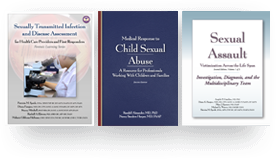The Global Nursing Shortage
A Global Crisis
It goes without saying that nursing professionals have very demanding and strenuous jobs. Unfortunately, the pandemic has exacerbated the negative aspects of nursing, in ways that have taken a huge toll on the nursing workforce. While there was already a shortage of nurses prior to the pandemic, it has now increased, exceeding at least 30 million globally. Stress, burnout, and fragile health systems have led to more and more nurses either leaving the profession or expressing their intent to leave. In addition, hospitals are experiencing higher nurse turnover rates, and nurses are experiencing more symptoms of psychological distress. In order to address the global impact, individual countries need to improve domestic conditions.
US Nursing Demands and Projections
The United States is no exception to the nursing shortage. Projections made by different organizations have varied, but the consensus is consistent. The employment opportunities for nursing are expected to grow at a faster rate than any other occupation in the next few years. In addition, it is projected that by 2030, the country will need over 200 000 additional nurses. This is emphasized by the fact that a shortage is still expected. By 2030, it is estimated that we will only have 94% of our nursing needs met.
Both shortages and projected needs for nurses vary from state to state. However, only 8 states are projected to have either enough or a surplus of nurses by 2030. The remaining 42 states are all projected to have a shortage. States in the southern and western regions of the country will see the highest demands and shortages.
Factors Affecting the Shortage 
While the pandemic has exacerbated the nursing shortage, there are numerous factors that are impacting both the rate of nurses leaving the field, as well as the increase in demand for additional nurses. In multiple recent surveys, over 30% of participants expressed intent or desire to leave their direct patient care roles. Turnover rates have also drastically increased. The field has already experienced the highest loss of nurses in the last four decades, which resulted in about 100 000 fewer nurses by the end of 2021.
Population Factors
Among the numerous factors affecting the nursing shortage is the aging population. Between 2011 and 2019, the number of Americans over the age of 65 increased from 41 million to 71 million. This number is expected to continue to increase through 2029. With the increase in aging population comes an increase in demand for health services. In addition, the nursing workforce makes up part of the aging population. In 2020, the median age of nurses was 52 years old. This is one contributing factor to the number of nurses leaving the workforce due to retirement. This number also impacts nursing faculty in education. Universities are experiencing a faculty shortage, meaning they are limited as to the number of students they can accept. This in turn prevents these universities from being able to keep up with the increase in nursing demands.
Workplace Factors
In addition to the changing population, multiple workplace factors have impacted the nursing field. While many of these factors were previously existing issues, the pandemic has exacerbated many of them to the point where the effect has become significant. The nursing field is extremely demanding, and many organizations have failed to provide the support needed in order to prevent employee burnout. Things such as staffing shortages and poor functioning health care systems have increased the stress and workload nurses already struggled with. In addition, the lack of work-life balance and safe working environments has contributed to the reasons nurses are leaving.
Potential Solutions
Potential solutions that have been suggested by different nursing organizations call for action in regard to health care systems in general, as well as the individual hospitals that employ nurses. The International Council of Nurses (ICN) recently published a report detailing both the toll the pandemic has had on the nursing workforce, as well as recommending steps to take in order to recover and create the workforce needed globally.
ICN Recommendations
The ICN report urges health care systems to invest in rebuilding the nursing workforce to then help rebuild health systems overall. This includes investing in adequate education, appropriate compensation, staffing, and safe work environments. With faculty shortages, the number of nursing graduates each year is limited. This prevents the number of new entrants to the field from adequately covering the number of nurses leaving. This ends up affecting the staffing within organizations. Inadequate staffing forces the existing nurses to suffer the consequences that lead to unmanageable workloads and unsafe working environments. As recent research has shown, this has led to a decrease in retention, resulting in a cycle that reinforces the shortage. The report also suggests policy changes to support those within the industry. The nursing shortage has been declared a global emergency by some, including the ICN, and as such, will take global efforts to sufficiently address it.
Additional Learning and Resources
To explore the ICN report referenced in this blog, click here.
For research on workplace conditions and nursing insights, click here.
To explore the state-by-state analyses, click here.
For additional information and resources, visit nursingworld.org.
This blog was written by STM Learning’s editorial staff for educational purposes only. It is not intended to give specific medical or legal advice. For expert information on the discussed subjects, please refer to STM Learning’s publications.







